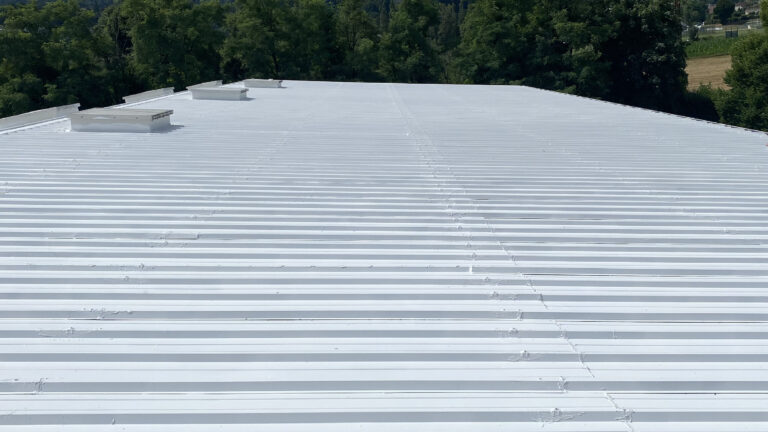Cool roofing, praised for its benefits during hot months, raises questions about its performance in winter. While building roofs play a crucial role in regulating indoor thermal conditions, their effectiveness during winter is being scrutinized. However, a deeper understanding of seasonal dynamics reveals a more nuanced perspective.
Sunshine in winter
Winter brings a set of climatic variables that alter the energy landscape of roofs.
As the sun lowers in the sky, it diffuses its radiation with less intensity, while shorter days and increased cloud cover limit the total amount of available solar light.
These conditions lead to a significant decrease in solar irradiation, sometimes up to 2.5 times less powerful than in summer, based on observed data in France.
Study on the performance of cool roofing in winter
A study conducted by the Lawrence Berkeley National Laboratory, through the Heat Island Group, examined the effects of cool roofing on winter heating consumption compared to summer cooling savings.
The study analyzed 150 buildings across 16 cities in the United States. The results showed that cool roofing reduced total energy consumption by an average of 7%. Any winter heating penalty associated with cool roofing was offset by summer cooling savings.
Even in diverse geographical areas, the energy savings achieved through cool roofing are significant.
Enhance the performance of cool roofing in winter
Each building represents a unique case, influenced by a multitude of factors such as its size, use, geographic location, orientation, level of insulation, and specific energy demand.
Therefore, selecting and implementing an appropriate cool roofing solution requires a tailored approach.
Conducting a comprehensive technical audit is therefore imperative to ensure optimal adaptation to the specific needs of each structure, thereby guaranteeing maximum performance throughout the year.
Cool roofing : an answer to the tertiary decree
The tertiary decree, adopted as part of the ecological transition, aims to reduce the energy consumption of tertiary buildings, which include offices, shops, hospitals, etc. This decree imposes obligations to reduce energy consumption and greenhouse gas emissions for these structures.
Concretely, it sets targets for reducing the final energy consumption of buildings, with a requirement for progressive reduction every five years. For instance, by 2030, a 40% reduction is mandated compared to the reference consumption of 2010.
Stakeholders must therefore implement actions aimed at improving the energy performance of their buildings, whether through renovations, more efficient equipment, or changes in energy management and usage practices.
This decree represents a significant step towards energy transition and combating climate change by promoting more responsible and sustainable management of energy resources in the tertiary sector.
An advantage throughout the year and sustainable
It is clear that cool roofing is an ecological and economical solution throughout the year. While its benefits in reducing summer heat are well-documented, it is also important to recognize its ability to contribute to energy savings in winter by effectively offsetting heat loss with savings achieved during the hotter months.
For businesses seeking sustainable solutions with positive impacts on their buildings and the environment, cool roofing is an attractive option to consider. It can reduce air conditioning-related energy consumption by 20 to 30% and help meet the requirements of the tertiary decree.



